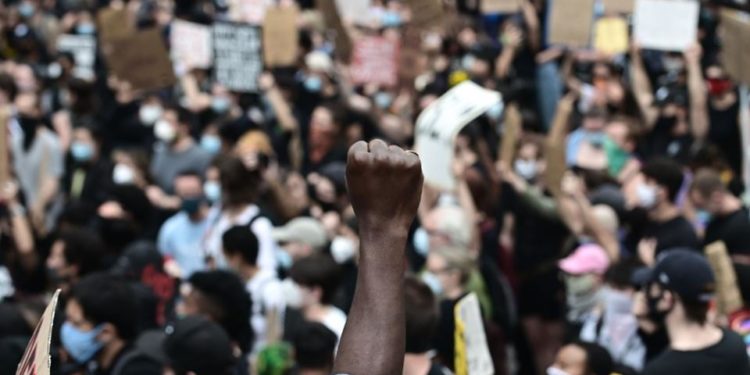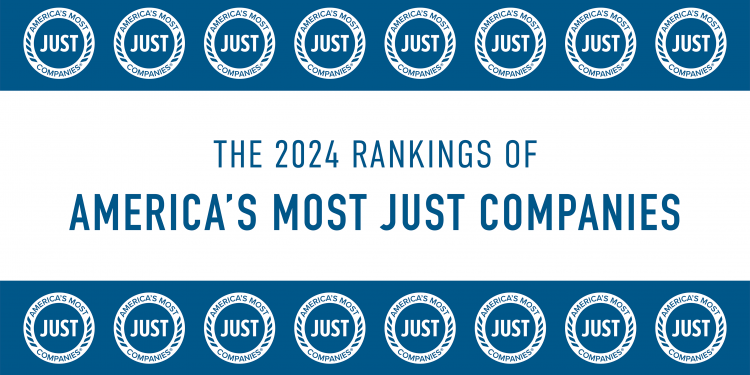What Companies Can Do to Combat Systemic Racism Against Black Colleagues in the Workplace
This week has been one of profound loss and mourning across the United States, following the recent murders of George Floyd, Breonna Taylor, Ahmaud Aubery, Tony McDade, and Nina Pop. However, for Black and Brown Americans, this grief is felt every day.
As many of my White friends and coworkers reached out to ask me how I’m doing in light of recent events, I couldn’t help but think I don’t feel any different. Not because every murder of a Black life does not shatter me to my core, but because my core is shattered every day – by the Black and Brown lives taken again and again by police and fellow citizens, by the countless instances of violence committed against Black bodies, by the fear I carry for the lives of my unborn child, my husband, my family, and all members of our community, not to mention my own life. And I come from a privileged background, benefit from having lighter skin, and am able to work from home during this pandemic. Most in my community face harsher living and working conditions than I ever have.
The COVID-19 pandemic has disproportionately killed Black Americans and further undermined our financial stability. We are not, and have never been, truly safe – not in our workplaces, not in our neighborhoods, often not even in our homes. Change across every aspect of our social fabric is needed to ensure the physical, emotional, and economic safety of Black Americans, and all people must take the time to consider how they are participants in and, for the majority of the country, beneficiaries of systemic racism.
Many corporate leaders have been speaking up in support of Black Americans, and while speaking up is a critical first step, there is so much more that needs to be done. In February, we put together a list of concrete, actionable steps that corporate leaders, workplace managers, and colleagues can take to begin to foster that safety at work, and address systemic racism both in their own organizations and across corporate America.
Today, we are updating that list for this moment in time, and encourage corporate leaders who have committed support to Black Americans to take the actions detailed below:
- Support the Black Lives Matter movement.
- Provide a safe and supportive workplace for Black employees.
- Assess your current workforce.
- Examine practices around furloughs and layoffs.
- Recruit Black workers.
Read more details on each of these essential steps below, including specific, concrete actions companies can take tomorrow toward each.
Support the Black Lives Matter Movement
Affirm publicly that Black Lives Matter.
In the past few days companies have started using the phrase “Black Lives Matter.” While it may appear symbolic to some, the implications are far reaching: It is an acknowledgment that Black lives are not being treated equally, that Black lives are being robbed systemically, that Black bodies are exploited, and that companies stand against oppressive systems that have subjugated Black persons for centuries.
Stand up against police brutality.
On average, 1,100 persons are killed by police officers every year in America. Companies have stepped up in recognizing the existence of police brutality toward Black and Brown communities. It is undeniable that concrete actions must be taken to redress violence and increase accountability. Activist DeRay Mckesson’s organization Campaign Zero has identified eight action items that, he said, “when a department goes from zero to all of them, there is a 70% reduction in police violence.” Companies can and should engage municipalities and review how they work with local police forces to curb police brutality.
Donate to organizations that are anti-racist or otherwise support Black people.
In the aftermath of recent violence against Black and Brown bodies, many companies today are donating dollars to anti-racism efforts and organizations like the NAACP, Black Lives Matter, the ACLU, National Urban League, and more. Consider allocating regular charitable giving dollars to these organizations, and others like them, on an ongoing basis – rather than just as a one-time gift today – as the work to repair our society will not simply end after this period of reckoning. In addition, if your company offers an employee match program, ensure that employees can give to these organizations and that your company will match their dollars, increasing the impact of individuals looking to support Black lives.
Provide a Safe and Supportive Workplace for Black Employees
Acknowledge and work to combat racial stereotypes.
There are a number of distinct racial stereotypes that surround Black individuals, which can profoundly and negatively impact their experience in the workplace – particularly, Black women and men can be perceived as angry, aggressive, or even threatening. Managers and colleagues should work to build awareness of these pathological stereotypes, and pay attention to instances where they might be treating Black colleagues differently. In particular, managers should recognize that it can be triggering for Black employees to receive criticism that reinforces racial stereotypes and silences their voices.
Provide support specifically to Black employees during times of crisis.
Something critical for all corporate leaders is that the specific experiences of Black employees is different – and at times vastly different – than those of White colleagues. With 12% of Black Americans saying they know someone personally who has died of COVID-19 (vs. 8% nationally), the personal impact on Black workers is indescribably greater. Emphasize the magnitude of this difference for your team, and highlight resources specifically for Black employees impacted by the virus and other crises. Provide additional paid time off for workers who are grieving, and share mental health resources specifically for Black employees.
Ensure that managers know how to support Black colleagues.
Managers play a critical role in ensuring that Black employees feel supported and encouraged to advance within their organization and beyond. Make sure that supervisors are aware of issues Black people face in the workplace, and provide them with training and resources that educate and help them better support their Black team members. Catalyst, for example, has developed a guide for managers looking to better support their Black female colleagues. Note that the issues faced by Black women and men can be different, and it is important that managers understand key nuances in working with Black colleagues of different genders. Unfortunately, managers can also be a source of discrimination, and it is critical for colleagues and other managers to listen with humility when Black employees voice concerns that they are being marginalized by teammates or supervisors.
Foster inclusive spaces for Black employees.
Black workers often express that they feel they don’t fit in with the dominant culture of their companies, and it’s important to ensure that your company’s culture embraces the strengths in your team’s differences, creating space for every individual to bring their authentic selves safely to the workplace. Provide a supportive structure for Employee Resource Groups (ERGs) to be created, funded, and sustained. Studies have shown that the mentorship provided through these groups has helped Black workers and other workers of color with recruitment, internal mobility, and retention. Ensure these groups exist not only within your company’s headquarters, but are also available in other locations and to all workers. In addition, conduct regular employee engagement surveys, and look at the results by demographics to identify specific issues Black workers may have raised and next steps your company can make to help address them.
Implement clear mechanisms for responding to and resolving discrimination against Black workers.
Whether or not employers implement all the best practices above, discriminatory situations are unfortunately likely to still arise. What matters most is how companies react and respond to those situations. Often workers who report discrimination face retaliation, creating a climate of distrust and even fear, where Black workers may be worried to even bring forward a discrimination claim. In addition to following due process, it is important for White colleagues to respond from a place of empathy and understanding that they may not fully comprehend what constitutes a micro-aggression. Create clear grievance mechanisms for employees to report instances of harassment or discrimination, and be transparent about steps management will take to address what has happened.
Assess Your Current Workforce
Conduct an assessment of your current workforce demographics.
An important first step to initiating change for Black employees is assessing the current demographic state of your workforce. Is the current number of Black employees on your team reflective of national demographics? Is it reflective of the local population? Understanding the racial and ethnic makeup of your workforce helps to determine what changes you might need to make to ensure your team is demographically representative – an imperative we’ve heard echoed by the public in focus groups across the country.
Set recruitment targets to address any discrepancies for Black employees.
Once you know the current makeup of your workforce, identify the specific positions and levels – from frontline workers to the C-suite – where Black employees are underrepresented. From there, set concrete recruitment targets, paired with accountability mechanisms that ensure that these targets will be met, like tying executive compensation to meeting diversity targets or holding leaders accountable to targets in performance reviews (see: Microsoft, Johnson & Johnson, and Citigroup).
Conduct an analysis to confirm that you are paying Black employees equally.
Too often, we look at individual workers and find justifications for why they are not being promoted or given raises as regularly as other employees. Today, Black men and women make 72 cents and 62 cents, respectively, for each dollar their White male colleagues make – which is why it is critical to look at how Black workers are being paid compared to their peers. Look at the compensation of your employees, and ask: Are your Black employees paid less across the board? Are they promoted less frequently? Are they receiving smaller raises? Conduct a pay equity analysis that looks at both race/ethnicity and gender across roles, be transparent about the results, and create a plan to correct any discrepancies you find.
Examine Practices Around Layoffs and Furloughs
Assess whether layoffs or furloughs impact your Black workers disproportionately.
Many companies have furloughed or laid off significant portions of their workforce in the wake of the COVID-19 pandemic. Unemployment has reached historic highs, with 21.5 million Americans filing for unemployment over the last few months. Unfortunately and predictably, Black workers are disproportionately affected. While the unemployment rate between February and April 2020 was 14.2% for White workers, it was 16.7% for Black workers (and highest for Black women at 16.9%). As you are going through the process of furloughing or laying off your employees, it is imperative that you take a look at whether these actions will impact your Black workers disproportionately. Be aware that bias and/or discrimination could make its way in the layoff process. Additionally, offering benefits, including health insurance, to any employees affected is particularly important during a global pandemic.
Recruit Black Workers
Bring back and recruit Black workers.
A recent McKinsey report noted that 39% of all jobs held by Black Americans are now threatened by reductions in hours or pay, temporary furloughs, or permanent layoffs, totaling 7 million jobs – meaning that Black workers are less likely to be able to find jobs in this new economy. Given the current COVID-19 economy, fewer companies are currently hiring. However, as states reopen, companies will be able to bring back their previously furloughed or laid-off employees, and eventually recruit more workers. Ensure you are actively bringing back and bringing on Black employees.
Develop recruitment strategies that prioritize the inclusion of Black candidates.
Today, Black employees face tremendous discrimination in the labor market, experiencing levels of unemployment at close to twice the rate of their White counterparts. Not only that, they tend to be out of work longer than their White, Asian, and Latinx peers. To include more Black candidates in the hiring process, build recruitment strategies and processes that account for racial and ethnic diversity – like ensuring that at least one ethnically/racially diverse candidate is brought in for final-round interviews for a position and/or establishing resume screening techniques that work to eliminate bias and discrimination.
Prioritize local talent, hiring from within, and employment for people with criminal records.
In addition to setting broad recruitment targets for Black candidates, focus on these specific areas. In your local community, invest in initiatives that build skills and provide opportunity to your local workforce and community, which can aid in ongoing recruitment efforts for Black candidates (see: IBM’s P-TECH). In looking at your existing team, remember that Black workers face greater barriers to advancement (for every 100 men who are promoted to management, only 58 Black women are promoted). Provide Black employees with additional training, career development opportunities, and managerial support to ensure that they are well-positioned to advance. And finally, it’s imperative to remember that Black Americans are arrested at a far higher rate than any other racial or ethnic group in the U.S. (in 2017, Black Americans constituted 27% of all individual arrests, more than twice their share of the U.S. population). Implement a second-chance policy that helps individuals with criminal records re-enter the workforce, or actively establish a recruitment policy for formerly incarcerated persons (see: Flower Foods and Homeboy Industries).
The past few months have brought to the surface the depths of the inequalities Black Americans face every day. From mainly occupying frontline jobs to being murdered while jogging, Black lives are at risk every day. Companies affirming publicly that Black Lives Matter is a necessary first step, but it will ring hollow unless it is accompanied by tangible actions to ensure that within their workforces Black workers are recruited, treated with respect and fairness, and given the opportunity to progress. Corporate leaders must play their part by taking as many of the above steps as possible. Doing so will not only help your Black workers feel more safe and supported within your company, but could be an important step toward equality for future Black Americans.
This piece was developed in collaboration with Fiyin Adesina, Yusuf George, Amanda Keating, and Kavya Vaghul.






